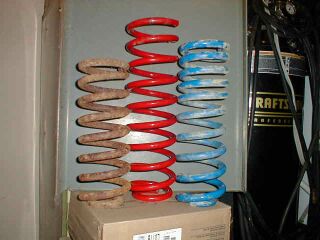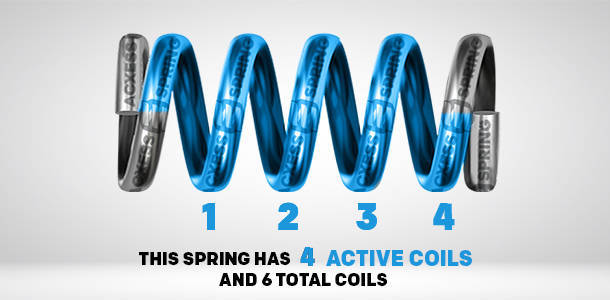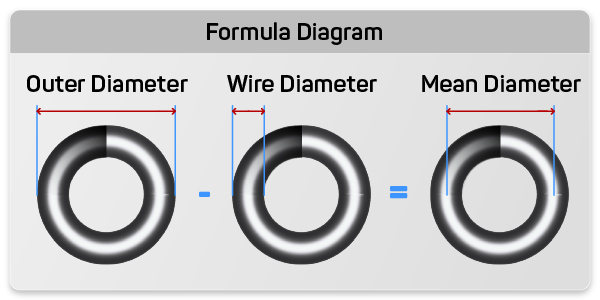
Some people doing their own custom suspension setups (such as solid axle swaps – aka SAS) have researched to find the coil spring rates of various coils to use in their Ford Ranger. We have gathered that information and placed it here so it’s in one place.
For reference, the stock Ford Ranger coil spring rate is 500 PPI (Pounds Per Inch)
Skyjacker 4″ coils = 450 PPI
Skyjacker 6″ coils = 410 PPI
Skyjacker 8″ coils = 410 PPI
Skyjacker Cherokee 6″ coils (pt# JC60F) = 240 PPI (solid axle)
Jeep XJ coils = 180-220 PPI
Early Bronco 5.5″ Deaver coils – 340-360 PPI (solid axle)
Deaver 4″ Superflex coils = 350 PPI (solid axle)
Deaver 6″ Superflex coils = 300 PPI (solid axle)
Rough Country 4″ coils = 434 PPI
Trailmaster 4″ coils = 445 PPI
Superlift 4″ coils = 530 PPI
Jeep Rancho 6423 coils = 240 PPI (solid axle)
Rusty’s Offroad coils = 150 PPI
James Duff 3″ Progressive-rate coils = estimated 400-500 PPI (conflicting, dual rate #)
How Can I Calculate the Spring Rate of a Coil?
If you have a coil spring and don’t know what it’s spring rate is, you can calculate it once you know:
Coil Spring Wire Diameter (CSWD) – How thick is the coil wire? The number must be entered as a decimal. To convert a fraction to decimal, click HERE.
Number of Active Coils (NOAC) – Coils that are free to move, not the coils seated. It may be that 1/2 of the top and bottom coil is seated causing a spring with 8 coils to have the distance of 7 free.

Coil Mean Diameter (CMD) – The diameter from center to center of the coil wire. Measure the diameter of the coil from wire center to wire center. If you know the coil is .5 inches thick and the outside diameter of the coil spring is 5-inches, then the Coil Mean Diameter would be 4.5-inches.

About The Author
Jim Oaks is the founder of The Ranger Station, one of the longest-running Ford Ranger enthusiast communities on the web. He has spent over three decades owning, modifying, repairing, and driving Ford Rangers on the street, trail, and cross-country routes.
Since launching TheRangerStation.com in 1999, Jim has documented thousands of real-world Ranger builds, technical repairs, drivetrain swaps, suspension modifications, and off-road tests contributed by owners worldwide. His work has been referenced by enthusiasts, mechanics, and off-road builders looking for practical, experience-based information rather than theoretical advice.
Jim’s hands-on experience includes long-distance overland travel, trail use, drivetrain and axle upgrades, suspension tuning, and platform comparisons across multiple Ranger generations. The content published on The Ranger Station is grounded in first-hand experience and community-verified data, not marketing claims or generic specifications.
